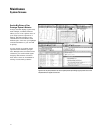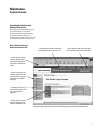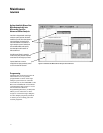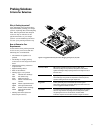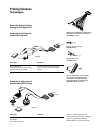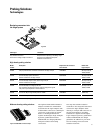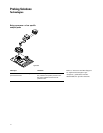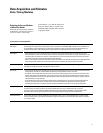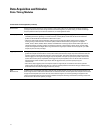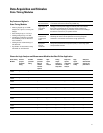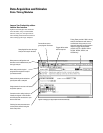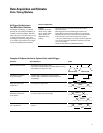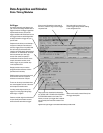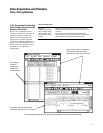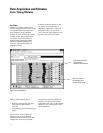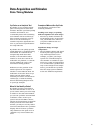
18
Data Acquisition and Stimulus
State/Timing Modules
Considerations for Choosing Modules (continued)
Channel Count Determine the number of signals you want to analyze on your system under test. You will need this number of channels in
your logic analyzer. Even if you have enough channels to view all the signals in your system today, you should consider logic
analysis systems that allow you to add more channels for your future application needs.
Memory Depth • Complex architectures and bus protocols make your debugging job increasingly challenging. Split transactions, multiple
outstanding transactions, pipelining, out-of-order execution, and deep FIFOs, all mean that the flow of data related to a
problem can be distributed over thousands or millions of bus cycles.
• The keys to useful insight are the combination of deep memory with responsive display refresh, search, rescaling, and
scrolling to help you find information and answers quickly. Hardware-assisted memory management in the Agilent
16740A, 16741A, 16742A, 16750A, 16751A, 16752A, and 16760A state and timing analysis modules makes quick work of
refreshing the display, rescaling, scrolling, and searching. It takes only a few seconds to refresh, rescale, or scroll a 32M
sample record. Agilent Technologies offers a range of state and timing analyzer modules with memory depths up to 128M
samples, at prices to meet your budget.
Triggering • The logic analyzer memory system is similar to a circular buffer. When the acquisition is started, the analyzer continuously
gathers data samples and stores them in memory. When memory becomes full, it simply wraps around and stores each new
sample in the place of the sample that has been in memory the longest. This process will continue until the logic analyzer
finds the trigger point. The logic analyzer trigger stops the acquisition at the point you specify and provides a view into the
system under test. The primary responsibility of the trigger is to stop the acquisition, but it can also be used to control the
selective storage of data. Consider a logic analyzer with the trigger resources you need to quickly set up your
measurements.
• After memory depth, triggering is the most important aspect of a logic analyzer to consider. On the one hand, powerful
triggering resources and algorithms will allow you to focus on potential problem sources without using up valuable memory.
On the other hand, to be useful, the trigger must be easy to set up.
Other In addition to the measurements made with an analysis probe, consider whether you need to monitor other signals. Be sure to
Measurements allow enough channels to make those measurements. For state measurements, the state speed of the analyzer must be at least
as high as the clock speed of your circuit. You may want to test the margin in your circuit by operating it at higher than the
nominal clock speed to determine if the analyzer has sufficient clock speed. For timing measurements, the timing analyzer rate
should be from 2-10X the clock speed of your target.



